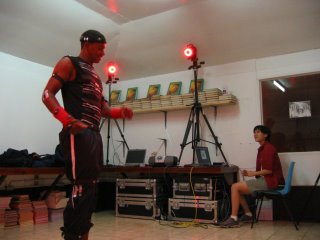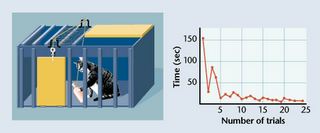 I succeeded in getting a lavender seed to germinate! It's doing well in a styrofoam cup that I cut the top off and punched a hole in the bottom to promote drainage. I also have a cup full of snapdragon seedlings and one with an unidentifiable seedling that I think will become one of the "dollar weed plants" I wrote about earlier. Now that I know I can germinate seeds and keep them alive I'll wait until spring to start the others. I'm very excited about the lavender - it's a different species than the mature one I have growing in the back yard. The snapdragons will be wonderful too; I have seeds for a variety of flower colors - deep burgundy, pink, white, orange with yelllow, pink with white, and pink with yellow. The front yard sprouted a yellow snapdragon two weeks ago. I didn't plant it. Its origin remained a mystery until I noticed my neighbor three houses down had a small patch of them. I think it's impressive that a tiny seed can be blown that far and actually take root. I'll collect its seeds soon so I'll have yet another color to add to my library for spring germination. The scrawny yellowish brown plant in the stryofoam is an african violet that my book said could be rooted from a cutting so I'm trying that experiment too.
I succeeded in getting a lavender seed to germinate! It's doing well in a styrofoam cup that I cut the top off and punched a hole in the bottom to promote drainage. I also have a cup full of snapdragon seedlings and one with an unidentifiable seedling that I think will become one of the "dollar weed plants" I wrote about earlier. Now that I know I can germinate seeds and keep them alive I'll wait until spring to start the others. I'm very excited about the lavender - it's a different species than the mature one I have growing in the back yard. The snapdragons will be wonderful too; I have seeds for a variety of flower colors - deep burgundy, pink, white, orange with yelllow, pink with white, and pink with yellow. The front yard sprouted a yellow snapdragon two weeks ago. I didn't plant it. Its origin remained a mystery until I noticed my neighbor three houses down had a small patch of them. I think it's impressive that a tiny seed can be blown that far and actually take root. I'll collect its seeds soon so I'll have yet another color to add to my library for spring germination. The scrawny yellowish brown plant in the stryofoam is an african violet that my book said could be rooted from a cutting so I'm trying that experiment too. The photo also shows my seedlings and a pod from a trumpet vine. A stand of them grows a few blocks from our house so I pulled off a few pods one day. They're ripening in the kitchen. They produce fast growing vines with pretty orange flowers that attract hummingbirds. The other photo on the right shows a couple of the other plants I'm trying to "root" from cuttings. The twigs are wisteria cuttings. My gardening book and the internet suggested that cuttings from a parent plant will grow roots if the fresh cutting is dipped in "rooting hormone" and then sunk into soil or vermiculite. I followed the directions so we'll see in about a month whether it worked. If so, the cuttings can be grown inside until spring and then transplanted. Wisteria produces flowers off the previous season's buds so I made sure to take cuttings with visible new buds. Cuttings are supposedly the quickest way to propagate a wisteria that will actually flower in the spring. I have seed pods too but the gardening gurus say that route will take at least a decade before the plant blooms.
The photo also shows my seedlings and a pod from a trumpet vine. A stand of them grows a few blocks from our house so I pulled off a few pods one day. They're ripening in the kitchen. They produce fast growing vines with pretty orange flowers that attract hummingbirds. The other photo on the right shows a couple of the other plants I'm trying to "root" from cuttings. The twigs are wisteria cuttings. My gardening book and the internet suggested that cuttings from a parent plant will grow roots if the fresh cutting is dipped in "rooting hormone" and then sunk into soil or vermiculite. I followed the directions so we'll see in about a month whether it worked. If so, the cuttings can be grown inside until spring and then transplanted. Wisteria produces flowers off the previous season's buds so I made sure to take cuttings with visible new buds. Cuttings are supposedly the quickest way to propagate a wisteria that will actually flower in the spring. I have seed pods too but the gardening gurus say that route will take at least a decade before the plant blooms. I also finally bumped off my sewing project! Since we moved in I have made curtains for every room of our house except one. I finished the bedroom curtains a while ago and finally used the excess fabric to make matching pillows and shams for the bed. The shams were intended to be just like the kind of thing you might see in a Pottery Barn catalog. I didn't follow a pattern for any of this stuff, so the shams look a little odd.
I also finally bumped off my sewing project! Since we moved in I have made curtains for every room of our house except one. I finished the bedroom curtains a while ago and finally used the excess fabric to make matching pillows and shams for the bed. The shams were intended to be just like the kind of thing you might see in a Pottery Barn catalog. I didn't follow a pattern for any of this stuff, so the shams look a little odd.  I had to stuff the black border to make it look decent - they were supposed to be two dimensional flaps ringing the pilllow but they looked b.a.d. when I turned the finished product inside out to take a look. I cried so hard from the laughter when I saw them. They really looked terrible. I showed them to my very understanding husband who laughed at how hard I was laughing at myself and my Frankenstein pillow shams. To solve the problem, I just stuffed the flaps with a little batting. They look much, much better now. I should have taken a photo of the shams before the fix. I like how the other pillows turned out too.
I had to stuff the black border to make it look decent - they were supposed to be two dimensional flaps ringing the pilllow but they looked b.a.d. when I turned the finished product inside out to take a look. I cried so hard from the laughter when I saw them. They really looked terrible. I showed them to my very understanding husband who laughed at how hard I was laughing at myself and my Frankenstein pillow shams. To solve the problem, I just stuffed the flaps with a little batting. They look much, much better now. I should have taken a photo of the shams before the fix. I like how the other pillows turned out too. The photo to the left shows some cloth baskets I made to store odd and ends like my glasses and whatever book or magazine I might want to read before going to sleep. Like the pillows, the concept comes straight out of a Pottery Barn catalog. I didn't like the colors or the price they offered so I used the left over curtain/pillow fabric to make them. They will hang off of wood dowels on the wall next to the bed and window. I didn't follow a pattern for these either; I just winged it based on the image I saw in the catalogue (see right). The hardest part was making sure the stiches matched up on the sides and top.
The photo to the left shows some cloth baskets I made to store odd and ends like my glasses and whatever book or magazine I might want to read before going to sleep. Like the pillows, the concept comes straight out of a Pottery Barn catalog. I didn't like the colors or the price they offered so I used the left over curtain/pillow fabric to make them. They will hang off of wood dowels on the wall next to the bed and window. I didn't follow a pattern for these either; I just winged it based on the image I saw in the catalogue (see right). The hardest part was making sure the stiches matched up on the sides and top.  It became a carpentry project and even a plumbing project in the sense that for some of the pinning I couldn't see what I was doing. I had to feel around for the previous seam to judge the distance from the black border to the bottom of the bag. I figure I'll cut a rectangular piece of cardboard for the bottom to keep it stiff and tidy. It should look something like the picture to the side (the Pottery Barn version).
It became a carpentry project and even a plumbing project in the sense that for some of the pinning I couldn't see what I was doing. I had to feel around for the previous seam to judge the distance from the black border to the bottom of the bag. I figure I'll cut a rectangular piece of cardboard for the bottom to keep it stiff and tidy. It should look something like the picture to the side (the Pottery Barn version).Last but not least I discovered a really cool line of stuffed animals (birds) that produce the song of the bird they represent when squeezed. The National Audubon Society produces them in conjuction with the Wild Republic company that makes a few of the monkeys I have. The stuffed monkeys bear a close similarity to the actual species they represent; the bird line is even more impressive. The Cornell Lab of Ornithology provided the song recordings.
 These bird toys strike me as an excellent way to train a child's ear so s/he'll be able to recognize the calls out in the field. It was difficult to choose which one to get so I purchased two with the neatest songs: the purple martin and the wood thrush, neither of which is on my 'life list.' The pamphlets stapled to their wings provides a biographical sketch of the species (in English and French) and shows its North American range. It also illustrates a few of the other species that can be collected. I think they're really neat. I found out the purple martin is called l'hirondelle noire (black martin) in French. The wood thrush is la grive des bois. Now that I think of it, I have seen the purple martin - many years ago near the Corkscrew Swamp Sanctuary in south Florida. The photo shows the scissor tailed flycatcher the company makes. Perhaps Wild Republic can team up with the University of Wisconsin Primate Library to make voices for their line of monkeys. Now that would really be cool!
These bird toys strike me as an excellent way to train a child's ear so s/he'll be able to recognize the calls out in the field. It was difficult to choose which one to get so I purchased two with the neatest songs: the purple martin and the wood thrush, neither of which is on my 'life list.' The pamphlets stapled to their wings provides a biographical sketch of the species (in English and French) and shows its North American range. It also illustrates a few of the other species that can be collected. I think they're really neat. I found out the purple martin is called l'hirondelle noire (black martin) in French. The wood thrush is la grive des bois. Now that I think of it, I have seen the purple martin - many years ago near the Corkscrew Swamp Sanctuary in south Florida. The photo shows the scissor tailed flycatcher the company makes. Perhaps Wild Republic can team up with the University of Wisconsin Primate Library to make voices for their line of monkeys. Now that would really be cool!
















